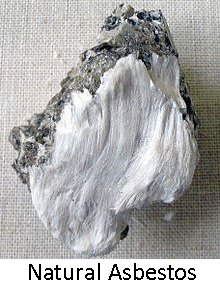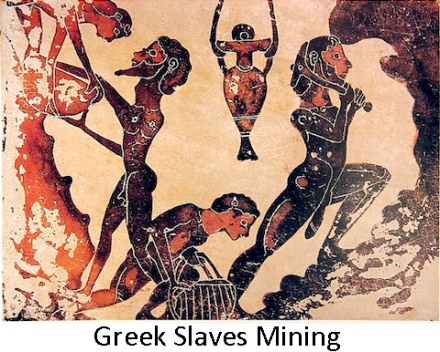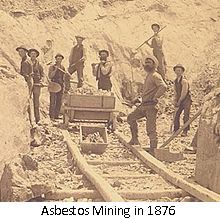Asbestos is a naturally occurring mineral dating back to prehistoric times. Mining for asbestos existed more than 4,000 years ago, but large scale mining began at the end of the 19th  century. This occurred when manufacturers and builders began using asbestos because of its desirable physical properties.
century. This occurred when manufacturers and builders began using asbestos because of its desirable physical properties.
• Sound absorption
• Resistance to fire, heat, electrical and chemical damage
• Affordability
Fire retardant properties made asbestos essential in the automobile and construction industries, as well as the military. Despite all those uses, asbestos remains a danger to human health, causing crippling diseases like asbestosis, mesothelioma and lung cancer.
Asbestos in the Ancient World
Asbestos occurs naturally in large deposits on every continent in the world. Archeologists uncovered asbestos fibers in debris dating back to the Stone Age, approximately 750,000 years ago. Paintings of slaves in mines and mines found in Finland, Sweden, Greece, and Cypress are dated back to 5000 BC. It is believed that as early as 4000 BC, asbestos’ long hair-like fibers were used for wicks in lamps and candles.
Between 2000-3000 BC, embalmed bodies of Egyptian pharaohs were wrapped in asbestos cloth to protect the bodies from deterioration. In Finland, clay pots dating back to 2500 BC contained asbestos fibers, which are believed to strengthen the pots and make them resistant to fire. Around 456 BC, Herodotus, the classical Greek historian, referred to the use of asbestos shrouds wrapped around the dead before their bodies were tossed onto the funeral pyre to prevent their ashes from being mixed with those of the fire itself.
Some scholars claim the word asbestos comes from the ancient Greek term, meaning inextinguishable, a characterization of the material’s invincibility from the intense heat of the fire pits used by the Greeks for cooking and warmth.
Others believe that the word’s origin can be traced back to a Latin idiom, meaning unsoiled, or unpolluted, since the ancient Romans were said to have woven asbestos fibers into a cloth-like material that was then sewn into table cloths and napkins. These cloths were cleaned by throwing them into a fire, from which they came out unharmed and essentially whiter than when they went in.
While Greeks and Romans exploited the unique properties of asbestos, they also documented its harmful effects on those who mined the silken material from ancient stone quarries. Greek geographer Strabo noted a “sickness of the lungs” in slaves who wove asbestos into cloth. Roman historian, naturalist and philosopher, Pliny the Elder, wrote of the “disease of slaves,” and actually described the use of a thin membrane from the bladder of a goat or lamb used by the slave miners as an early respirator in an attempt to protect them from inhaling the harmful asbestos fibers as they labored.
Asbestos in the Middle Ages and Beyond
Around 800 AD, Holy Roman Emperor Charlemagne of France ordered a tablecloth made of asbestos to prevent it from burning during the accidental fires that frequently occurred during feasts and celebrations from candles. Like the ancient Greeks, he also wrapped the bodies of his dead generals in asbestos shrouds. By the end of the first millennium, cremation cloths, mats and wicks for temple lamps were fashioned from chrysotile asbestos, from Cyprus, and tremolite asbestos, from northern Italy.
In 1095, the French, German and Italian knights who fought in the First Crusade used a catapult, called a trebuchet, to fling flaming bags of pitch and tar wrapped in asbestos bags over city walls during their sieges. In 1280, Marco Polo wrote about clothing made by the Mongolians from a “fabric which would not burn.” Polo even visited an asbestos mine in China to disproved a myth that asbestos came from the hair of a wooly lizard.
Chrysotile asbestos was mined during the reign of Peter the Great, Russia’s tsar from 1682 to 1725. A purse made of fireproof asbestos, now part of London’s Natural History Museum collection, was brought to England by Benjamin Franklin during his first visit there as a young man in 1725. Paper made from asbestos was discovered in Italy in the early 1700s. By the 1800s, the Italian government was utilizing asbestos fibers in its bank notes. The Parisian Fire Brigade in the mid-1850s wore jackets and helmets made from asbestos.
By 1878 the first commercial asbestos mine in North America opens.
